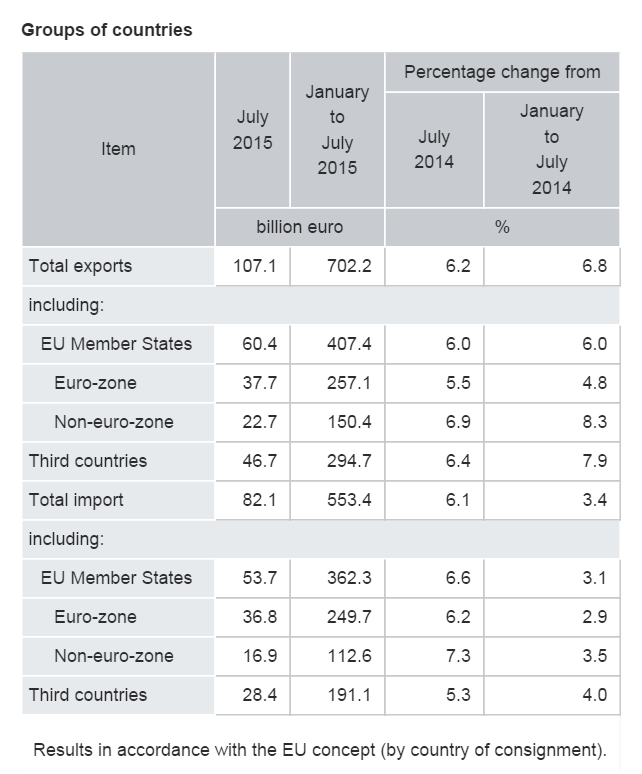The German export boom continued apace in July, with their value up 6.3% on July 2014. For the period January to July, exports rose 6.9% year on year, whilst imports rose by 3.4%. This gives further evidence of Germany’s rapidly rising overall trade and current account surpluses, with a major impact on its trading partners within the eurozone and elsewhere.
Exports to the EU for the 7 month period rose by 6%, with those to the Eurozone at a lesser 4.8%, and to other EU countries (including UK) by a huge 8.3%. Sales to the rest of the world increased by 7.9%.
Total imports from the EU for the 7 month period rose by 3.1%, with 2.9% from the Eurozone. Thus German exports to the rest of the Eurozone continue to expand at a faster rate than imports from the European monetary union area, thus further exacerbating trade imbalances within the zone.
Imports from the rest of the world rose by 4%, or half the rate of increase of exports.
As a result, Germany’s current account surplus continues to rise, which means a growing current account deficit elsewhere (including, significantly, the UK). According to Destatis (the German government statistical office):
The foreign trade balance showed a record surplus of €25.0 billion in July 2015. In July 2014, the surplus amounted to €23.5 billion. In calendar and seasonally adjusted terms, the foreign trade balance recorded a surplus of €22.8 billion in July 2015.
According to provisional results of the Deutsche Bundesbank, the current account of the balance of payments showed a surplus of €23.4 billion in July 2015, which takes into account the balances of trade in goods…(+25.7 billion euros), services (–6.3 billion euros), primary income (+6.4 billion euros) and secondary income (–2.4 billion euros). In July 2014, the German current account showed a surplus of €20.6 billion.
This table from Destatis gives the relevant details for the trade figures for July, and Jan-July:





